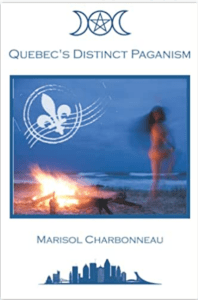
When I was new to Pagan studies — actually, “Pagan studies” had not even coalesced as a field of study — Jim Lewis’s edited volume Magical Religion and Modern Witchcraft (SUNY Press, 1996) was one of my go-to volumes.
I had an essay in it, not something I am proud of, but definitely a product of “fake it till you make it.”((It has not been cited often. Once was in a court brief over a prisoners’ rights case.))
Jim was there early. Before The Triumph of the Moon, although after Drawing Down the Moon.
As a good scholar of new religious movements, he was out ahead of of the main group, asking “Who are they? Where did they come from? What do they do? Are they friendly?”
Branch Davidians, Satanists, Scientologists, New Pagans, Space Aliens, Neoshamanism, Falung Gong — he was there. His publication record would be enough for six typical professors.
Jim was also known for encouraging younger researchers, particularly during the time he taught. In the early 1970s, he had been a yoga teacher and founded his own short-lived “community” in Tallahassee, Florida, before going entering postgraduate work.
And like many scholars of new religious movements (NRMs), he had a hard time making a living in academia. Despite the vibrancy and relevance of NRM research, it just does not draw the funding and respect. You’re better off specializing in New Testament studies and writing yet another book about the Apostle Paul, or developing some new slant on gender-and-theology, if you want to be hired.
 Born in 1949, Jim died October 11, 2022. I did not learn this until the American Academy of Religion meeting in late November, sadly. He was hugely prolific as an author and editor, but he was also working right up to the end — because he had to.
Born in 1949, Jim died October 11, 2022. I did not learn this until the American Academy of Religion meeting in late November, sadly. He was hugely prolific as an author and editor, but he was also working right up to the end — because he had to.
After some para-academic publishing work, Jim had taught in the University of Wisconsin system for some time but apparently never had a solid position. Then he was hired by the Arctic University of Norway in Tromso, which really is so far north that you lose the Sun for a while. Seasonal affective disorder aside, it seemed like a good gig, and I for one was happy for him. And presumably there would be enough petro-kroner for a pension.
He published several articles in The Pomegranate in those years
, with special attetion to the growth of Paganism in nations that collect religious-membership statistics.
But apparently there was a problem in Norway — he had not put in enough years — he could not get a full-time appointment past age 66 — or some such thing. I don’t how this worked, but he ended up at Wuhan University in China, although he was working remotely in 2020, luckily for him.
If you look at his publications from 2018–2021, you will see a lot about Falun Gong, the large, international new religious movement that has been a particular target of the Chinese government.
To be honest, the Chinese government, after a period of general hands-off, has been realy hard on all religions: Tibetan Buddhism, Islam, Chinese Christian groups, ancient Daoist temples, family and clan ancestral shrines — all have been shut down, bulldozed or forced to turn themselves into government billboards.
No rivals to “President Xi Thought” are permitted, it appears.((For more, read the Bitter Winter NRMs webzine.))
Beyong writing critically about Falun Gong, he tried cutting some corners in order to pad the rèsumès of his new Chinese colleagues. As far as The Pomegranate was concerned, I refused to play along, and he cut all communications.
But whatever he did, I suspect he took the Wuhan gig to make some last good money as a senior scholar for himself and his wife. Which loops me around to where I started, that the study of new religous movements still, after fifty or sixty years, is not taken as seriously in academia as it ought to be — and hence not compensated.
And that is why too that I don’t expect to see any endowed chairs in Pagan studies in my lifetime.


 As ever, book reviews in The Pomegranate: The International Journal of Pagan Studies are open-access free downloads. Here are links to the four in this issue.((I receive a small commission on Amazon sales, which helps to pay for this website.))
As ever, book reviews in The Pomegranate: The International Journal of Pagan Studies are open-access free downloads. Here are links to the four in this issue.((I receive a small commission on Amazon sales, which helps to pay for this website.))

 The Imagination of Plants: A Book of Botanical Mythology
The Imagination of Plants: A Book of Botanical Mythology










